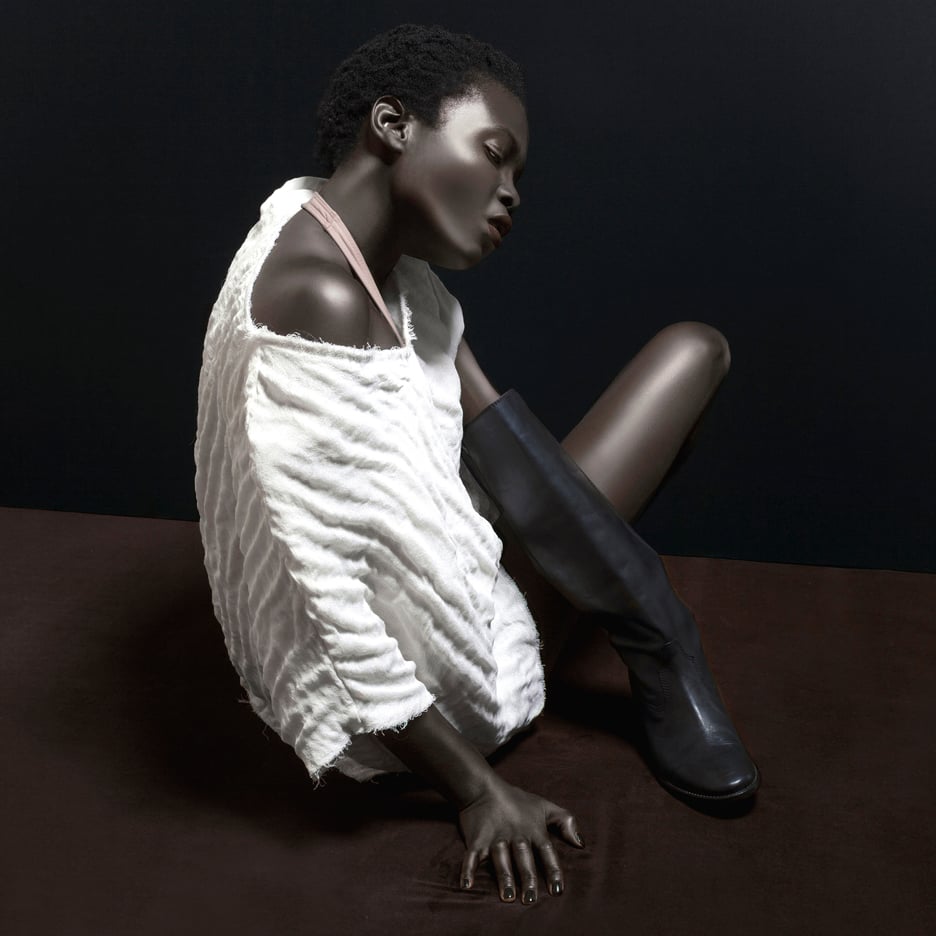Dutch Design Week 2015: Eindhoven designer Jessica Smarsch used digitally captured body movements to inform the raised patterns across the clothes in this fashion collection.
To create the shapes of her Constructing Connectivity range, Smarsch attached a wireless armband to participants to record their movements and relayed the data through an Arduino circuit board.
The information was then fed into a specially developed software programme that visualises the movements as a series of on-screen graphic patterns.
By changing their movements, armband-wearers could alter the animated shapes to influence the final patterns, which were downloaded as a series of instructions for a loom.
"Rhythm and repetition are key components to the textile making process and are also the aspects that contribute to its association with mind-body connectivity," said Smarsch, who graduated from a masters programme at Design Academy Eindhoven this year.
"In some cases, participants mimicked the literal motions of the weaving process, but with abstracted props," she told Dezeen. "Finally these props were developed into a simple modular tool set. These components have variations in weight, flexibility – some even make sound – and can be customised by the user."
Digital files of the patterns were read by industrial looms at TextieLab, and translated into textiles that featured a mix of fibres woven together. By washing the material, the fibres became agitated and constricted to create a textured outcome.
For the first collection, the designer collaborated with dancer Ron Duiker to create a series of patterns that were transformed into a range of seven shirts.
"The graphics were fine-tuned through several iterations of movement before we achieved a desirable set of outcomes," the designer said.
Although Smarsch has a professional background in textiles, she told Dezeen that the project posed significant technical challenges.
"We are so used to pushing a button and getting immediate, flawless feedback," she said. "We take this for granted, but these flawless results are incredibly complex and highly designed."
"Starting from the bottom-up with the electrodes and Arduino, I was able to understand how these systems work – and how complex the process would be to create a working model."
The designer sees the project as an opportunity to re-introduce craftsmanship, and reconsider the production process by creating a system based around genuine demand rather than "mindless consumption".
"Textile making was a meditative way of working that required creative engagement and purposeful decision making," she told Dezeen.
"After working in the textile industry for many years, I felt that there was quite a disconnection between this way of working and the industrial process."
"Rather than return to craft through handiwork, I wanted to explore ways to reintegrate mind-body connectivity into our incredibly sophisticated, industrially mechanised processes," she added.
Smarsch is currently speaking to a potential industrial textile partner, and is hoping to develop the software and hardware into a system that may be accessible to all.
The clothes will be exhibited at Design Academy Eindhoven as part of Dutch Design Week, which takes place from 17 to 25 October.
Designer Brooke Roberts similarly used biological data in a collection of clothes, turning MRI brain scans and medical imagery into patterns for women's knitwear.
Electronics and programming was provided by Marco van Nieuwenhoven and Sami Sabik. Photography is by Lisa Klappe.

